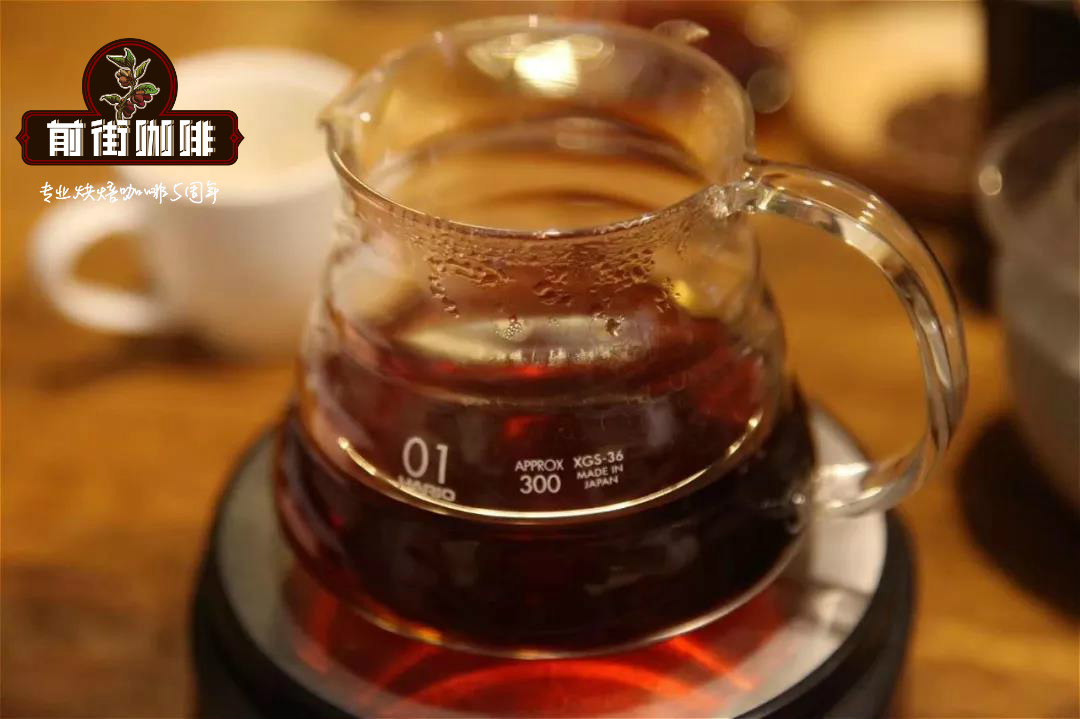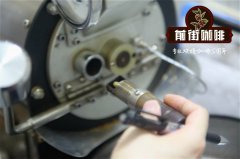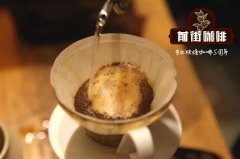The legend of the most expensive coffee distinguishes the taste of Blue Mountain Coffee

Professional coffee knowledge exchange More coffee bean information Please pay attention to coffee workshop (Weixin Official Accounts cafe_style)
When it comes to coffee, the most famous is Blue Mountain Coffee, regardless of whether people who drink coffee have heard of Blue Mountain Coffee. Before introducing the coffee queen-KONA hometown Hawaii, today we take a look at the coffee king-Blue Mountain hometown, Jamaica.
01 |planting history
In 1717, King Louis XV of France ordered coffee to be grown in Jamaica. In the mid-1920s, Nicholas, governor of Jamaica, ordered coffee to be grown in Jamaica. Nicholas Lawes imported Arabica seeds from Martinique and began planting them in St. Andrew. To this day, St. Andrew's is one of the top three growing regions for Blue Mountain coffee in Jamaica, along with Portland and St. Thomas.
Within eight years, Jamaica exported more than 375 tons of pure coffee.
Coffee production peaked in 1932, harvesting more than 15000 tons of coffee.
The Jamaica Coffee Industry Board was established by the Government of Jamaica in 1950 to establish quality standards for Jamaica coffee and oversee the implementation of quality standards to ensure the quality of Jamaica coffee. The Commission awards a special official seal to Jamaica's exports of green and roasted coffee and is the world's highest national coffee authority.
At present, there are 6 kinds of marks that can represent the origin of Blue Mountain Coffee, such as Marpheus River Embankment Central Factory (MBCE), Blue Mountain Coffee Cooperative Factory (MHCCT), Portland Blue Mountain Coffee Cooperative Factory (PXXSH), Coffee Industry Association (Wallenford), Coffee Industry Association (St. John Peak) and Blue Beauty (JAS).
By 1969, the situation had improved, as Japanese loans had improved the quality of production and thus secured the market. By now, the coffee has reached the point of being fanatically loved.
By 1981, about 1500 hectares of land in Jamaica had been cleared for coffee, followed by investment in another 6000 hectares. In fact, today's Blue Mountain region is a small area of only 6000 hectares, and it is impossible that all the coffee labeled "Blue Mountain" is grown there.
Jamaica was also the last country to ship coffee in barrels. Only through the Jamaica Coffee Industry Board (C. I .B) stipulates that this series of stringent standards of identification, coffee can receive the government award of the guarantee, officially titled "Blue Mountain" name.
02 |geographical conditions
Jamaica is an island located in the Caribbean Sea. The Blue Mountain of Jamaica is the highest mountain in the western Caribbean Sea (2256 meters high). The unique flavor of Blue Mountain Coffee is related to the unique geographical location and climatic conditions of Blue Mountain.
Blue Mountain is located in the coffee belt of 25 degrees north latitude, with fertile new volcanic soil, fresh air, no pollution, rainy all year round, high humidity, large temperature difference between day and night, rich in nitrogen and phosphorus, very suitable for coffee growth, fertile volcanic soil, regular rainfall and hazy clouds on the island, so that it is far from the sun. All these factors combine to create Blue Mountain Coffee.
Jamaica Blue Mountain Coffee is harvested annually from June to November and is generally artificially harvested. Because coffee trees grow entirely on rugged hillsides, the picking process is difficult and unskilled local women workers simply cannot do it. It's important to pick coffee beans that are ripe, as immature or overripe can affect the quality of coffee.
03 |Coffee classification
Jamaica Blue Mountain coffee comes in three grades: Blue Mountain Coffee, Jamaica High Mountainin Supreme Coffee Beans, and Jamaica Prime Coffee Beans.
Blue Mountain Coffee and Alpine Coffee are divided into two grades. From quality to points from top to bottom: Blue Mountain No. 1, Blue Mountain No. 2, Mountain No. 1, Mountain No. 2, Jamaica coffee.
From the top to the bottom of the quality points are: NO.1, NO.2, NO.3 and PB, PB is round beans. According to CIB standards, the basic standards of NO.1 blue mountain raw beans are beans with more than 17 meshes, defect rate less than 3%, moisture content about 13%, etc.
Blue Mountain coffee is usually grown between 457 and 1524 meters above sea level. Coffee grown between 274 and 457 metres above sea level is often referred to as Jamaica coffee, and Blue Mountain coffee is several times more expensive than Alpine coffee. It is mainly distributed in John Crow, St. John's Peak,Mossman's Peak,High Peak and Blue Mountian Peak.
04 |approach
So far, Jamaica Blue Mountain Coffee has only been washed.
The peel, pulp and mucous membrane were removed by washing and fermentation. Farms that use water washing must build water washing tanks and be able to introduce an endless stream of fresh water. When processing, first remove the peel pulp, let it ferment for 12-18 hours, then put the beans into the pool, move back and forth, and use the friction of the beans and the power of running water to wash the coffee beans smooth and clean.
After washing, at this time, coffee beans are also wrapped in the inner peel, moisture content of 50%, must be dried, so that the moisture content reduced to 12-14%, after which the coffee beans are screened, and then placed in a special warehouse storage, these procedures must be strictly controlled, otherwise, coffee quality will be affected.
05 |About the Manor
WALLENFORD
WALLENFORD Manor is located in the heart of the Blue Mountains of Jamaica-Catherine Peak on the slopes of about 1524 meters above sea level. WALLENFORD Estate began planting Blue Mountain coffee in 1790. The cold and foggy climate all year round makes the coffee fruit sweet and thick, producing extremely unique and high-quality Blue Mountain coffee beans.
Moreover, while the Jamaica government has sold and privatized most of the estates, WALLENFORD ESTATE is the only estate that has been retained and directly managed by the Jamaica government. Its quality control process is the most stringent, and it is not overly commercial, but is responsible for maintaining the reputation of Jamaica Blue Mountain Coffee.
1. Jamaica Coffee Board official registration Logo, used for export Jamaica Blue Mountain coffee certification inspection;
2. Jamaica Coffee Board (CIB) officially registered BLUE MOUNTAIN COFFEE trademark, identifying authentic Jamaica Blue Mountain coffee outer packaging;
3. WALLENFORD COFFEE COMPANY Registered trademark, logo WALLENFORD Blue Mountain coffee outer packaging
Mavis bank
The Munn family started Mavis Bank in 1885 at a slightly higher elevation than the current site, called Strawberry Hill. Mavis Bank processed coffee cherries at high altitudes. They invested in new equipment to produce coffee beans. The coffee beans were greatly improved because they had a truly zero defect process. The taste of this coffee was very mild and smooth, sometimes reminiscent of the frozen top oolong tea in the mountains.
R.S.W Blue Mountain
R.S.W. Blue Mountain Estate is located in the mountains southeast of Jamaica. R.S.W. refers to 100% Blue Mountain Coffee produced by its Resource, Sherwood Forest and Whitfield Hall estates. The height of coffee grown in these three areas is about 700 meters to 1600 meters. The mountain is often filled with cool clouds, which is very beneficial for the growth of coffee trees. After harvest, all the fruits are concentrated in Sherwood Forest washing plant for processing.
Clifton Mount Estate
According to the Jamaica Institute in 1810, Robert Hamilton was the owner of the farm at the time. Clifton Hill is divided into two parts, 80 acres of coffee and 427 acres of pasture at the top of the hill; 111 acres of coffee and 264 acres of pasture at the foot of the hill.
The Blue Mountain region is a small area of only 6000 hectares, and it is impossible for all the coffee labeled "Blue Mountain" to be grown there. Today Clifton Farms is the largest estate in the area, and by international standards it is also a small-scale plantation, many owned by smallholders whose families have worked the land for two centuries.
Clifton Hill is Jamaica's oldest coffee growing area that still functions, and Clifton Farm is the only farm in Jamaica with the "Rainforest" logo.
Clifton Farm grew and produced coffee as early as the mid-18th century (circa 1750). The coffee growing and processing area here averages 4300 feet (1310.64 meters), sufficient altitude, mild afternoon cloud shade, plenty of sunlight and mineral-rich planting soil provide good growth conditions for coffee trees and prolong the ripening of coffee cherries.
How to identify true blue mountains?
1. Appearance: Blue Mountain Coffee's raw beans are cyan, the appearance is very neat, the size is medium and small, the two ends are somewhat tilted, and the volume increases a lot after baking, which is very full.
2, grinding beans: real blue mountain coffee beans grow at high altitude, its cytoplasmic structure is relatively loose, when grinding by hand, it feels very crisp and very continuous, there will be no feeling of resistance.
3, aroma: aroma is very rich, dense; the so-called blend of blue mountain coffee, is not this aroma.
4, taste: real blue mountain coffee taste balanced, rich, there will be no taste outstanding or lack of feeling, this is also any other coffee beans can not match, the most critical identification points.
True Blue Mountain and Blue Mountain flavor are two different concepts, generally using other beans to roast out of imitation of Blue Mountain coffee taste similar coffee. The beans of "Blue Mountain Match" are mixed, and the shapes are relatively different, which is easy to identify. Also don't believe dozens of dollars a pound of "best blue mountain", more than ten dollars a cup of "blue mountain coffee".
Related recommendations: how to grade blue mountain coffee beans? What are the flavor characteristics of Blue Mountain Coffee?
Important Notice :
前街咖啡 FrontStreet Coffee has moved to new addredd:
FrontStreet Coffee Address: 315,Donghua East Road,GuangZhou
Tel:020 38364473
- Prev

The characteristics of Blue Mountain Coffee how to distinguish between true and false Blue Mountain
Professional coffee knowledge exchange more coffee bean information please follow the coffee workshop (Wechat official account cafe_style) [preface] when it comes to drinking coffee, many friends will immediately say, give me a cup of Blue Mountain. Jamaican Blue Mountain Coffee has a high reputation, low production and a long history. It can be said that even if you have never tasted boutique coffee, you have heard of Blue Mountain Coffee. Blue Mountains are often seen in the market.
- Next

The Secret of Jamaica Blue Mountain Coffee the characteristics of Blue Mountain Coffee can be explained in all aspects.
Professional coffee knowledge exchange more coffee bean information please follow the coffee workshop (Wechat official account cafe_style) Blue Mountain Coffee producing Jamaica, named after the Blue Mountains surrounded by the Caribbean Sea. Sour, sweet, bitter taste are very harmonious and have excellent flavor and aroma, suitable for individual coffee, suitable for moderate roasting. The Blue Mountains are located in the east of the island of Jamaica (Jamaica).
Related
- Detailed explanation of Jadeite planting Land in Panamanian Jadeite Manor introduction to the grading system of Jadeite competitive bidding, Red bid, Green bid and Rose Summer
- Story of Coffee planting in Brenka region of Costa Rica Stonehenge Manor anaerobic heavy honey treatment of flavor mouth
- What's on the barrel of Blue Mountain Coffee beans?
- Can American coffee also pull flowers? How to use hot American style to pull out a good-looking pattern?
- Can you make a cold extract with coffee beans? What is the right proportion for cold-extracted coffee formula?
- Indonesian PWN Gold Mandrine Coffee Origin Features Flavor How to Chong? Mandolin coffee is American.
- A brief introduction to the flavor characteristics of Brazilian yellow bourbon coffee beans
- What is the effect of different water quality on the flavor of cold-extracted coffee? What kind of water is best for brewing coffee?
- Why do you think of Rose Summer whenever you mention Panamanian coffee?
- Introduction to the characteristics of authentic blue mountain coffee bean producing areas? What is the CIB Coffee Authority in Jamaica?

